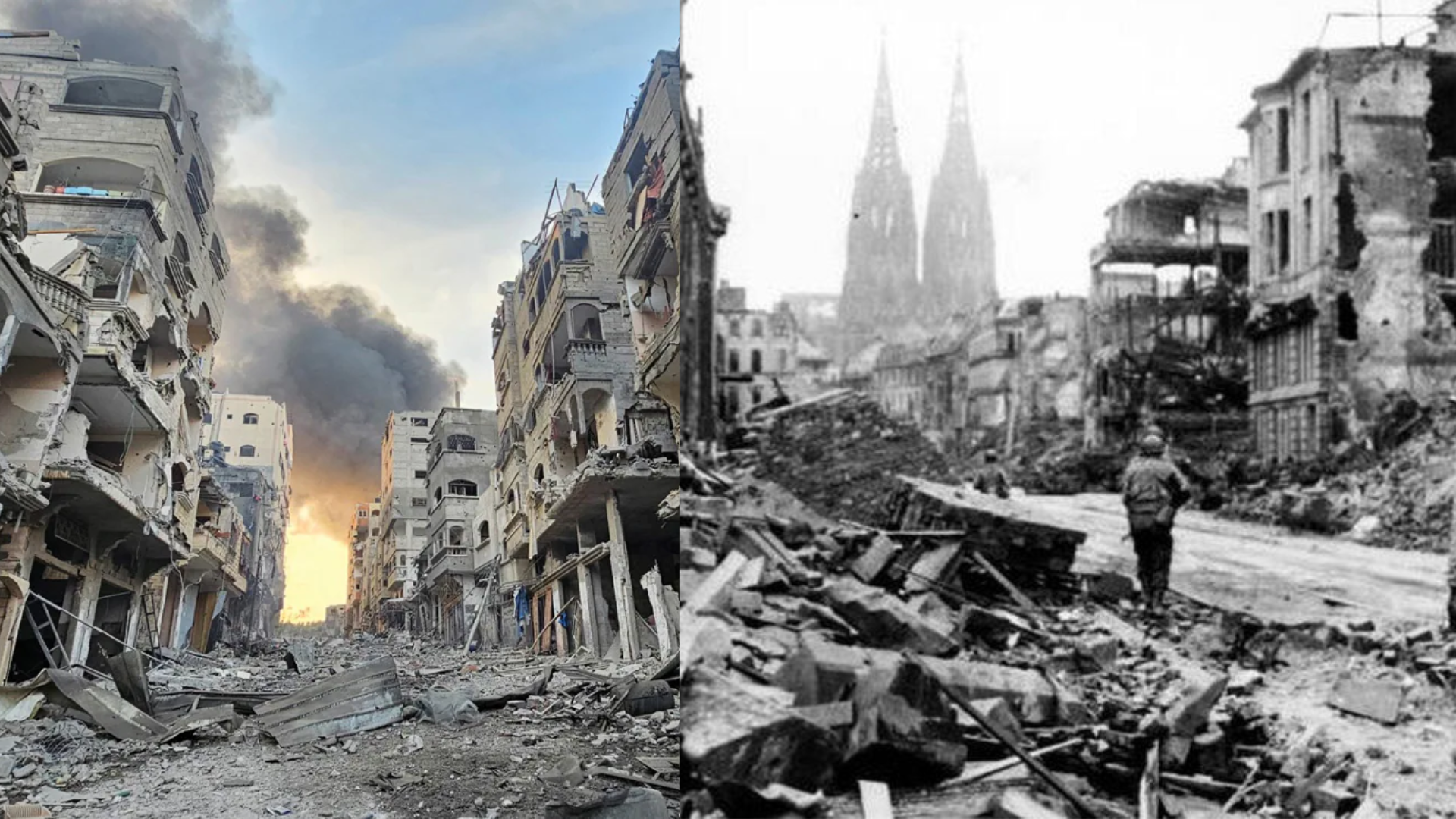The Israel attack on Gaza has unleashed destruction on a scale that surpasses even the most notorious allied bombing campaigns of World War II, such as those on Cologne, Hamburg, and Dresden. According to Euro-Med Human Rights Monitor, Israel has dropped over 70,000 tons of bombs on Gaza since October 7, exceeding the destruction of WWII’s worst bombings. This unprecedented assault underscores the extreme humanitarian crisis in Gaza and sets a new, troubling precedent in modern warfare.
What Happened On October 7?
Hamas gunmen carried out an unprecedented and deadly attack on Israel from Gaza, marking the deadliest assault in Israel’s history. On the morning of October 7, waves of Hamas militants crossed the border from Gaza into Israel, killing approximately 1,200 people. Among the victims were children, the elderly, and 364 young attendees of a music festival. Hamas also launched thousands of rockets and took over 250 hostages back to Gaza.
Why Is Israel attacking On Gaza?
In response to the Hamas attack, Israel quickly launched an extensive air strike campaign targeting Gaza. Prime Minister Benjamin Netanyahu stated that Israel’s goals were to dismantle Hamas and secure the return of hostages. Three weeks later, Israel initiated a ground invasion and also launched bombardments from the sea. The initial strikes were concentrated on northern Gaza, particularly Gaza City and the tunnels beneath it, which Israel identified as Hamas’s military hubs. Israel ordered the 1.1 million residents of northern Gaza to evacuate south for their safety. After a brief truce in late November, the Israel Defense Forces (IDF) expanded their ground operations to southern Gaza. Troops advanced into Khan Younis, Gaza’s second largest city, where the IDF suspected senior Hamas leaders were hiding. They also moved into refugee camps in central Gaza. According to the health ministry run by Hamas in Gaza, over 33,000 Palestinians have been killed and tens of thousands injured by Israeli strikes since the conflict began, with most of the casualties being women and children.
Massive Bombardment And Its Consequences
The Israeli military’s use of advanced and powerful munitions has resulted in unprecedented levels of destruction. The devastation in northern Gaza is likened to the carpet bombing of Cologne, Hamburg, and Dresden, which were heavily targeted by the Allied forces between 1943 and 1945. Northern Gaza, particularly Gaza City, has borne the brunt of this aerial bombardment, suffering extensive damage even before the ground invasion began.
Urban Areas Reduced To Broken Fragments
Satellite imagery reveals that entire neighborhoods and suburbs of Gaza City, once home to 677,000 residents, have been turned into rubble. Key infrastructures, including the Islamic University of Gaza, hospitals, religious buildings, and a sewage treatment plant, have been destroyed. An analysis by Corey Scher of the CUNY Graduate Center and Jamno Van Den Hoek of Oregon State University indicates that over 60 percent of northern Gaza’s buildings were razed within seven weeks of the conflict.
Comparison With World War II Bombings
The scale of destruction in Gaza surpasses the damage inflicted on German cities during World War II. From 1943 to 1945, the Allied forces’ bombing campaigns destroyed about 50 percent of urban areas in German cities. In comparison, the force and range of munitions used by Israel in Gaza have resulted in even greater devastation. 70,000 ton of bombs were dropped by Israel on the Gaza city compared to the World War II- where 15,000 tons of explosive power by nuclear bomb were dropped by the US in Hiroshima, 18,300 tons of bombs were dropped by Germany in London, 8,500 tons in Hamburg and 3,900 tons in Dresden.
Advanced Military supplies And Their Impact
Israel has employed US-manufactured Mk 80 aerial bombs, which range from two to four meters in length and can weigh up to 900 kilograms. The Mk 82 bomb, for example, can devastate anything within a 31-meter radius. Regularly used 2000lb bombs, such as the “earth-shaking” GBU-31, are significantly more powerful than the 500lb bombs used by Allied forces in the battle for Mosul in 2017-18.
High Frequency Of Bombings
Munitions expert John Ridge, cited in the FT report, estimates that Israel deployed at least 1,000 air-to-surface munitions within the first two weeks of the assault. This contrasts with the peak bombing period in Mosul, where around 600 munitions were detonated weekly. Across Gaza, over 200,000 buildings are estimated to be fully or partially destroyed.
Humanitarian Impact And International Response
Israel maintains that its military actions are directed at Hamas operations in retaliation for the October 7 incursion by Hamas into Israel. However, the high civilian death toll has prompted Western governments to urge Israel to minimize civilian casualties. Over 16,000 Palestinians have been killed, and thousands more injured in the conflict. Investigations by humanitarian organizations suggest possible war crimes, with Amnesty International indicating evidence of Israel using US-made JDAM bombs in strikes causing mass casualties.
The Israel attack on Gaza, driven by Israel’s advanced munitions and intense bombardment, has reached levels reminiscent of the most devastating attack.














